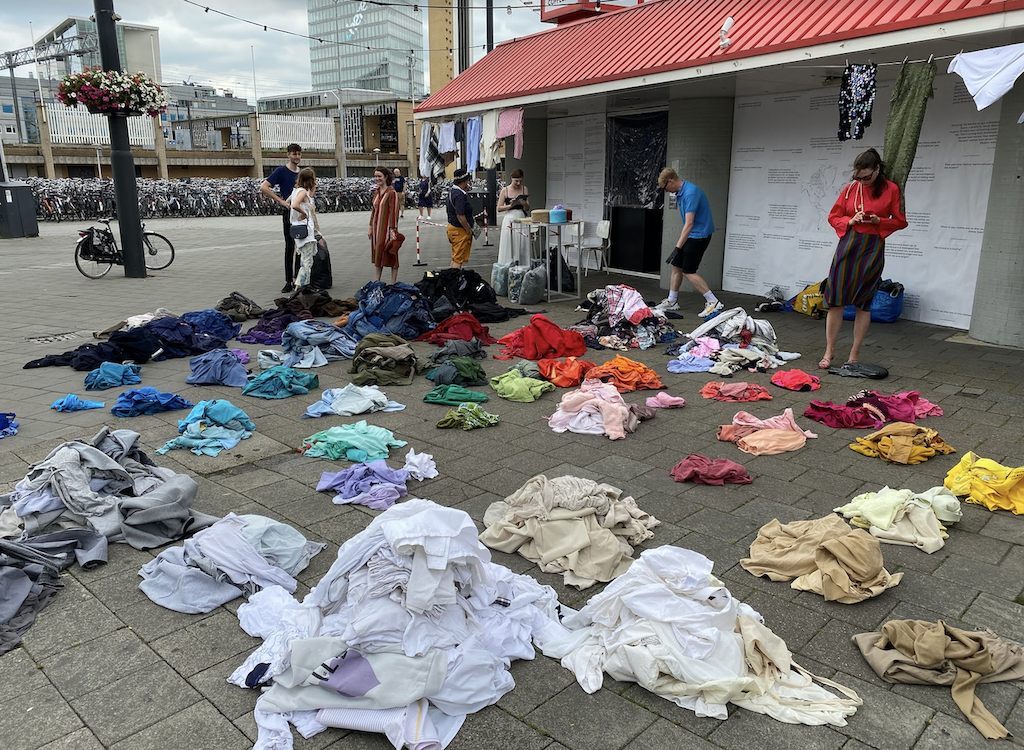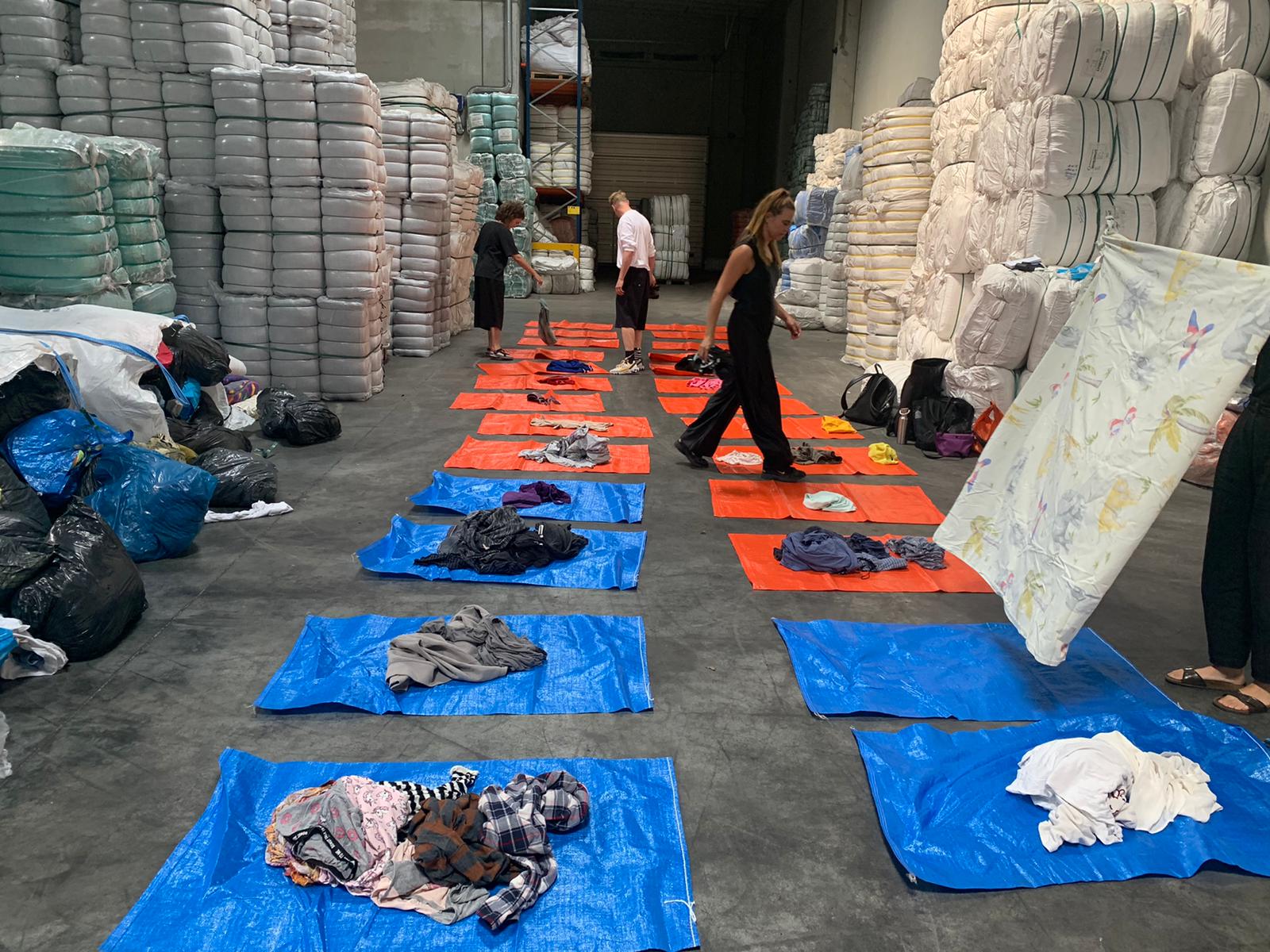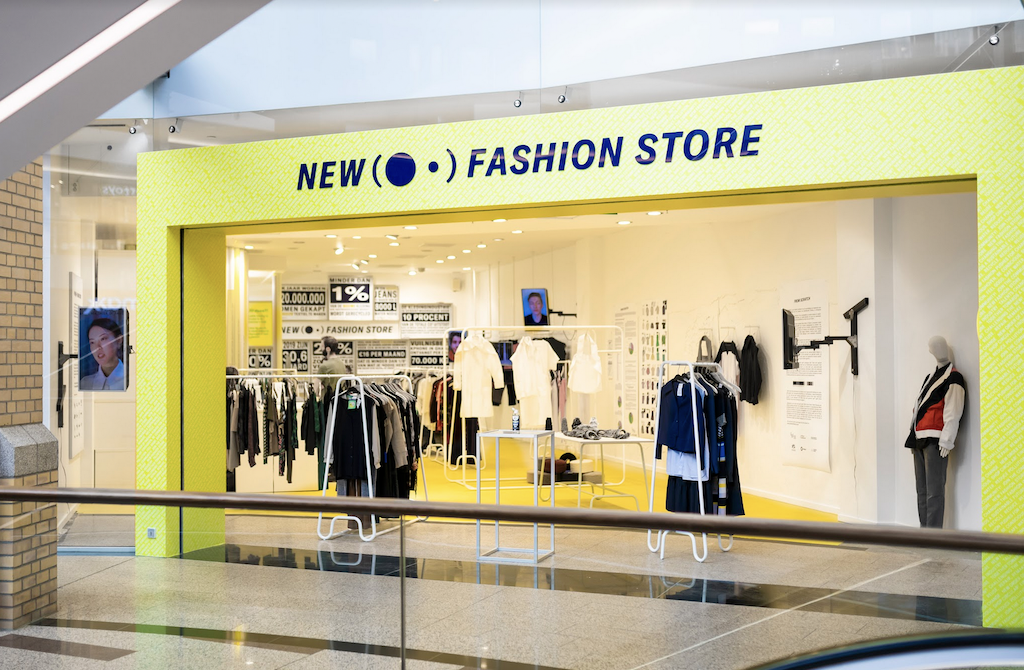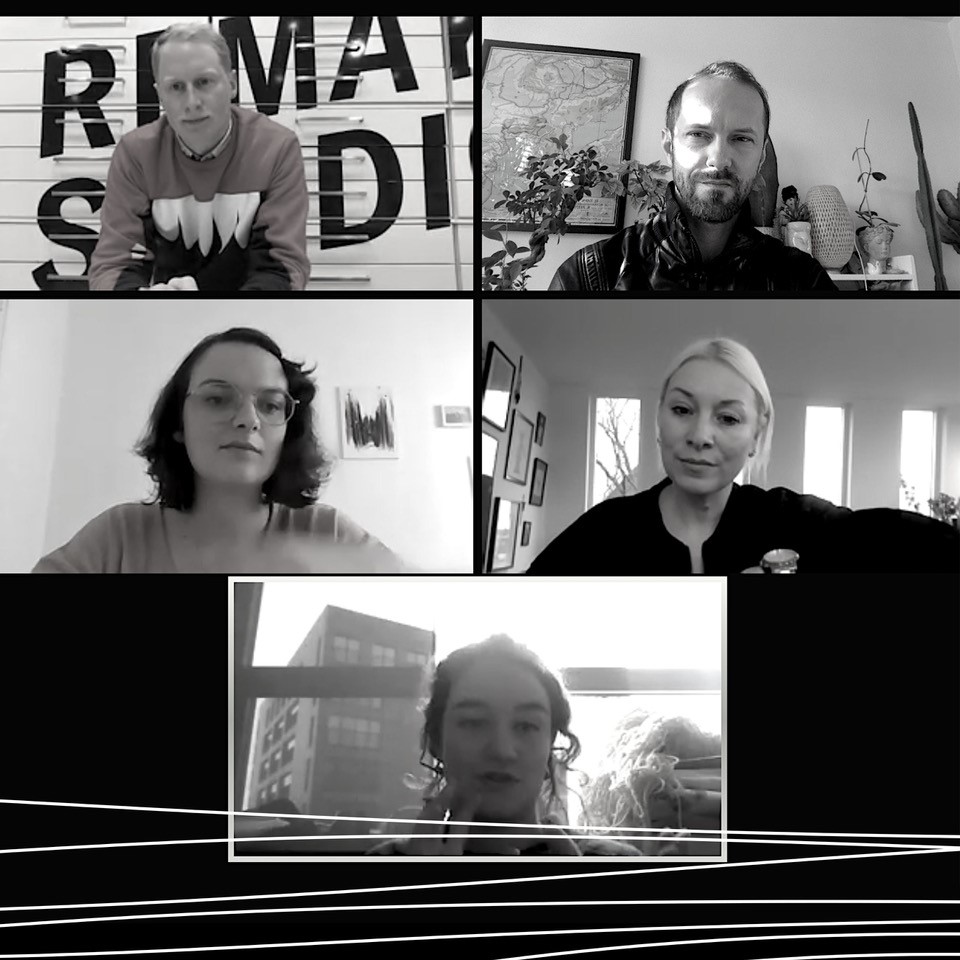"End is near, time for new beginnings." The title of New Order of Fashion’s (NOoF) 2019 exhibition reveals the foundation’s drive to transform fashion. “We wanted to stop with all the convictions about fashion and start listening to our talents”, Harm Rensink, NOoF’s Creative Director explains. “It’s all about new materials, new aesthetics, new ways of producing.”
New Order of Fashion is a platform gathering fashion talents from around the world to create a network of game-changers, culminating in an annual innovative fashion exhibition at Dutch Design Week (DDW). “We search for exceptional people, unique in their voice,” Rensink states. “NOoF takes a more active, rebellious approach in rethinking the fashion industry”.

Entrance into fashion’s future
The idea for this year’s DDW exhibition came about before the pandemic, but COVID-19 made it only more relevant. NOoF designers first envisioned “From Scratch” as an active exhibition, a walk-in clothing repair store. Public response to the preparation phase appeared overwhelmingly positive – NOoF collected 1,500 kg of clothes in just two days. Subsequently, a month before DDW, NOoF decided to open a “fashion store of the future” in Eindhoven’s Heuvel Gallery. Partners Wolkat, a post-consumer textile recycler, and Bart Hess, a fashion designer, joined NOoF talents Alicia Minaard and Marie Sloth Rousing in creating a holistic experience that extended beyond the DDW. Looking at the city as a source of fashion, the partners carried out a series of projects that blend fashion and education. Through fashion collections and various public interventions, NOoF highlighted that garments we don’t wear anymore aren’t waste but a useful resource for creative explorations instead.
Upon collection, the clothes were sorted by colour. This was the starting point for Hess’s visual representation of Eindhoven’s “colour barcode”. By putting the colours in a line, Hess set to discover the city’s look. It turned out that Eindhoven’s most popular colour is black, followed by various shades of grey. Bright colours remained at the end of the spectrum.
Most of the sorted apparel ended up at Wolkat’s facilities, where they were turned back into the fabric and spun into a yarn. Sloth Rousing and Hess then organized designing sessions to see how one’s pattern can benefit the other’s design. The result is a couture collection for purchase at the store in Heuvel Gallery. “I love to see that people collaborate more and more,” Rensink asserts. “We invite designers to show their ways of upgrading or designing. It’s nice to see this emerging community, people wanting to collaborate rather than see each other as competition.”
Outsourcing problems, obscuring solutions
Collaboration is crucial in light of the challenges that sustainable, circular fashion needs to overcome. On a systemic level, the industry around second-hand clothing overshadows investments and interest in recycling structures. “Recycling clothes often requires more money than it makes,” Minaard reveals. The current multinational agreements enforce that second-hand garments are sorted and re-located around the world rather than reused. Such an
arrangement slows down any
development in the recycling market. It also has very real consequences
for livelihoods, although far away from our sight and, often, awareness.
Minaard shared her observations from a two-month field trip to Accra,
Ghana, home to one of the world’s largest second-hand markets,
Kantamanto. The market receives between 960.000 kg to 2.700.000 kg of
second-hand clothes weekly. Most of the garments are what the ‘West’
considers category C, the lowest, quality. The process of collecting,
sorting, and re-selling the shipments proves exploitative of its
labourers, particularly, the Kayayei women. They come from Northern
Ghana to the capital in search of improved income and find themselves
trapped in abusive financial structures. Unable to save anything for
their families, the Kayayei women eventually end up sleeping on the
streets. Additionally, the dawn of fast fashion in the past 15 to 20
years drastically lowered the clothing’s quality. Today, many resellers
can’t make a profit on second-hand apparel anymore. “First, we took
their resources, now we’re colonizing with waste”, Branko Popovic,
co-director of FASHIONCLASH and Activities Referent at Culture.Fashion,
sums up Minaard’s story. Resellers throw much of the clothing on the
streets, where it lies for weeks before it ends up in Kpone landfill.
The business model that took over assumes buying new, cheap clothes from
Chinese sellers. “We can’t really say anything about this, we’ve made
this mistake too”, Minaard notices. “There’s a heavy post-colonial
system around this market.” A real-impact solution that NOoF promotes is
to move from a linear to a circular way of producing garments, as well
as to prolong the lifespan of those we already own.
Change, one garment at a time
NOoF aims to contribute to the growing public awareness of reusing, repurposing, and recycling clothes. “We want to show people that there are many options and that re-doing your whole wardrobe to be sustainable is not the way,” Minaard explains. Her social design research for “From Scratch” focused on reading labels as, in her words, “The label is the only place where brands can be transparent.” During her investigation, Minaard could see the relationships between production, design, and consumption, and identify tangible, accessible-to-all steps towards more sustainable clothing practices. A label reading workshop is a good starting point. In Minaard’s sample, 20% of the labels were cut out, which makes it close-to-impossible to take good care of clothes. The remaining labels rarely listed all countries or makers involved in the production due to the supply chain’s complexity.
Today, it is often cheaper to buy new than to put time and effort into fixing one’s garments. Subsequently, knowledge around repairing is fading away. “From Scratch” aims at reviving that knowledge and showing that repairing is a worthy activity. “If people are more aware and keep their clothes longer,” Minaard explains, “they can spare so much energy and waste.” Prolonging the lifespan also allows for developing recycling techniques. NOoF has a first-hand experience with how difficult it currently is. The recycled yarn is short and easily breakable, so not good for the sawing machine. Besides, many microfibers can still get washed out. “Many things need to be re-thought to make recycled yarn a good product,” Minaard points out. The effort is worthwhile as, according to Annabelle Lampe from Wolkat, the collected 1,500 kg of clothes correspond to 6 kilometres of fabric.

Trending: circularity
Dealing with fashion waste puts a chain reaction in motion, as it
triggers fundamental questions about production and consumption
patterns. With the knowledge gathered in the process, NOoF plans to do
more interventions with the shop’s visitors. Although in-store repairs
and selling repair kits are impossible during the extended lockdown,
NOoF managed to organize a “repair party”, as Rensink laughingly
describes it. One of their 2020 talents, Matthew Needham, led a workshop
on repairing garments with pre-delivered repair kits. NOoF plans more
open workshops and interventions based on Minaard’s research and various
knowledge-sharing collaborations. On the fashion side of things, NOoF
will develop two new circular materials in collaboration with the
Textile Museum in Tilburg. Stina Randestad, NOoF’s 2018 talent, will
prepare sculptural knits from recycled fabrics, and Needham will create
non-woven fashion materials. All to participate in knowledge exchange,
joining the transition towards responsible fashion practices that has
been gaining momentum across the Netherlands. Community-building is a
cornerstone and an important element of the success around “From
Scratch”. With its network of rebellious innovators, NOoF will continue
to play its part in transforming the fashion industry from linear
production and consumption into respect for the clothes, the workers,
and the planet.
Written by Zuza Nazaruk
www.zuzanazaruk.com/

